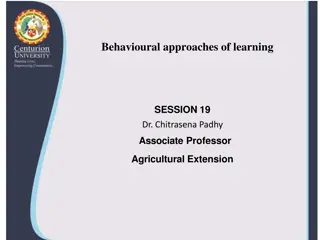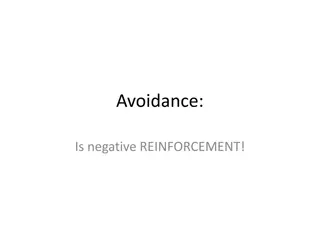Understanding Superstitious Behavior Through Operant Conditioning Experiments
Explore the phenomenon of superstitious behavior through the lens of operant conditioning experiments conducted by behaviorists like B.F. Skinner. Discover how noncontingent reinforcement can lead to the development of superstitious beliefs in both humans and animals, as demonstrated in various studies and real-life examples.
Download Presentation

Please find below an Image/Link to download the presentation.
The content on the website is provided AS IS for your information and personal use only. It may not be sold, licensed, or shared on other websites without obtaining consent from the author. Download presentation by click this link. If you encounter any issues during the download, it is possible that the publisher has removed the file from their server.
E N D
Presentation Transcript
Knock Wood Presented by Anna DiFelice and Megan Dern
Background B. F. Skinner Father of Radical Behaviorism Skinner Box Environment Consequences Reinforcers vs. Punishers Extinction
Question: Does being superstitious require thinking, knowing, and reasoning? Hypothesis: Operant Conditioning has much to do with superstitious behavior.
Theory Knocking on wood, avoiding walking under ladders, stepping on sidewalk cracks, etc. Why do people gain superstitious behaviors? Noncontingent Reinforcement
http://www.youtube.com/watch?v=TtfQlkGwE2U Experiment Method: -Skinner Box -Skinner used Pigeons -Positive reinforcements -Intervals Results: -6/8 trials -Superstitious behaviors -The pigeons believed whatever they were doing affected whether or not they got food -Extinction
Discussion Bowling: -twist and turn your arm -your arm has no effect on the ball -ball s movement in addition to the consequence creates superstition The effect of high expectations and extinction
Another Example 1961 Bruner and Revuski Experiment: -Four Students sit in front of four buttons -Reinforcement every 10 seconds -They all developed a superstitious pattern
More Recently 1998 Sagvolden experiment based off of Skinner s findings ADHD boys vs. non- ADHD boys























